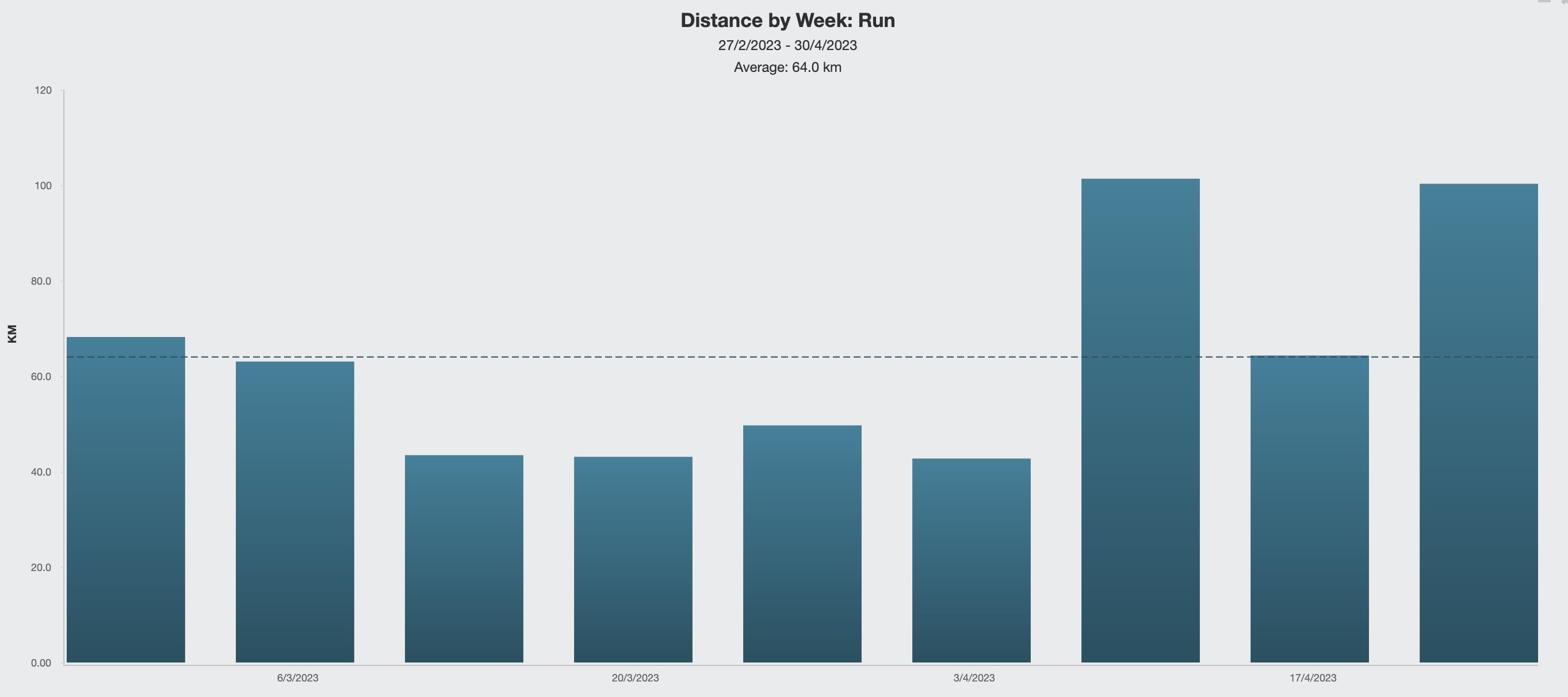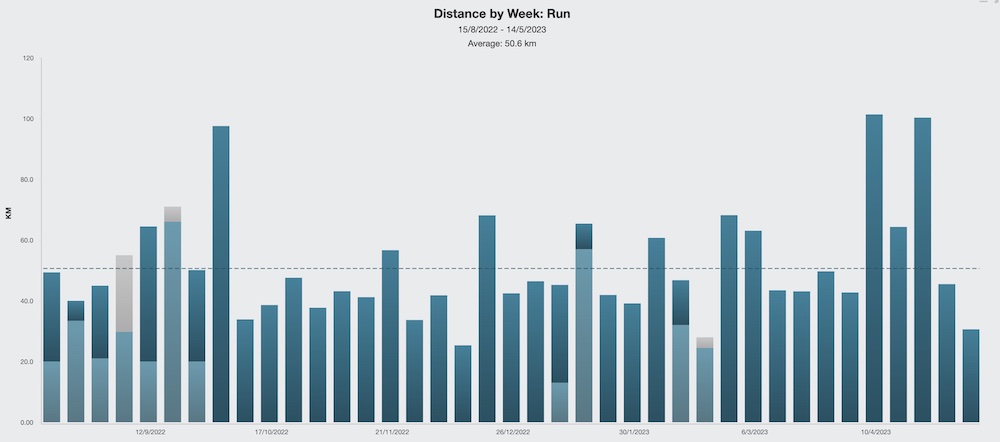Peaking for Cape Wrath Ultra
Training log - the detail
I’m going to post some details of my training as they may come in useful for other people looking to do the Cape Wrath Ultra. This is definitely not about showing off - I genuinely have no clue if have done enough to get through CWU. There are, of course, many other factors that will determine that but I have found it difficult to gauge what is, and what isn’t, an amount of training that gives me a decent chance.
People are reluctant to put numbers on it and I can understand that - doing the training is no guarantee and, in the end, there is the rest of one’s life to consider. It might not be realistic to do huge training volumes and that doesn’t mean you’ll not make it. Equally, setting the bar too high might mean people strain to raise their training load to levels where something goes ping or they run into other problems. (RED-S for example.)
The last block of training
I came back from a lovely ski holiday at the end of February knowing that I had a 9-week block to get myself ready. A little too long for a block really but here is how that shaped up:
| 05 Mar 23 | 12 Mar 23 | 19 Mar 23 | 02 Apr 23 | 09 Apr 23 | 16 Apr 23 | 23 Apr 23 | 30 Apr 23 | |
|---|---|---|---|---|---|---|---|---|
| Distance: | 68.2km | 63.1km | 43.4km | 49.7km | 42.7km | 101km | 64.3km | 100km |
| Time: | 10h 37m | 9h 59m | 7h 02m | 6h 32m | 6h 17m | 14h 29m | 10h 09m | 13h 57m |
| Elevation gain: | 3195m | 3402m | 2513m | 2046m | 2276m | 4470m | 3398m | 4315m |
| Profile: | 46.8m/km | 53.9m/km | 57.9m/km | 41.2m/km | 55.3m/km | 44.3m/km | 52.8m/km | 43.2m/km |
| Avg speed: | 6.4km/h | 6.3km/h | 6.2km/h | 7.6km/h | 6.8km/h | 7.0km/hr | 6.3km/hr | 7.2km/hr |
I think there are a few things to pick out here.
Hitting a 100km week
Firstly, I managed to average 64km per week for this period and I hit two weeks of 100km. That was a bit of a mental hurdle for me. In this last period, I had set myself a goal of doing some 100km weeks and it was pleasing to get them in.
My distances did fall off for about 3 weeks at the end of March into April. There was nothing deliberate about this. It was an intense period at work including some travel and I then picked up a bug at about the same time. It took me at least a couple of weeks to shake off the fatigue from that - in that regard it was very Covid-like but I repeatedly tested negative. That’s just viruses for you.
It was quite a difficult time. I was very aware of the ticking clock and I felt the pressure to do more. I resisted and, thankfully, my energy levels came up and I was able to build again.

My background of regular off-road running
The important thing about this last block is that I didn’t go from zero before tackling this. This graph, screenshotted from Training Peaks, shows what I had been doing since the previous August. So, it covers nine months of training and includes my preparation for the 50-mile Lakes in a Day in October 2022.

I’ve been averaging over 50km per week for the past nine months so that’s a good base - and the table below gives the details back to the beginning of 2020. Before that I was running perhaps half of this each year all the way back to 2014 - but I was also doing more cycling and swimming in those years. Unusually, perhaps, as I’ve got older I’ve focused more on running rather than variation. All of this running is almost entirely off-road and on trails - that’s reasonably evident from the elevation data.
This table shows the basic figures for 2020-22:
| 2020 | 2021 | 2022 | |
|---|---|---|---|
| Distance: | 2094km | 2198km | 2228km |
| Elevation gain: | 101,606m | 130,083m | 121,382m |
| Gradient profile: | 48.5m/km | 59.2m/km | 54.5m/km |
I have covered a lot of hills!
How much training is needed for Cape Wrath Ultra
Who knows? It is incredibly difficult to tell.
This is one area where I would absolutely love to see some good research to help guide JWTF1 participants. It doesn’t need to be stellar stuff but the academic in me is crying out for a decent study of training for multi-day events and some simple analysis with DNS/DNF and injuries etc.
Interestingly, the people who run the Marathon des Sables have this to say:
Each participant should adapt his/her training program to his or her goal: finish among the first or simply finish the race. Train progressively: for the long distance runner, weekly runs should average one hundred to 125 miles. For more modest objectives, the goal should be 30 or 50 miles weekly. Increase your mileage progressively.
When they refer to “long distance runner” I think they are meaning the competitive elite sorts. They don’t really need to be told how much to do. Interestingly, the suggestion here seems to be 30-50 miles per week could be enough. Many would think that cutting it fine but I don’t think they just plucked it out of the air. I can see that might be the case - as long as the running was properly specific for Marathon des Sables. That means off road, soft ground, and a good chunk of that training needs be with the heavier bag they need to carry.
The well-known journalist, Sophie Raworth, ran between 50 and 70 miles in the months leading up to the Marathon des Sables. Cape Wrath Ultra participant Alastair Meldrum has a participant blog on the CWU site where he gives more details on his training - worth bearing in mind he actually came 6th overall. He certainly was not bringing up the rear!
Specificity is critical when the mileage ain’t that great - I’ll look at that in a bit more detail in the next post.
JWTF: Just Want To Finish ↩︎